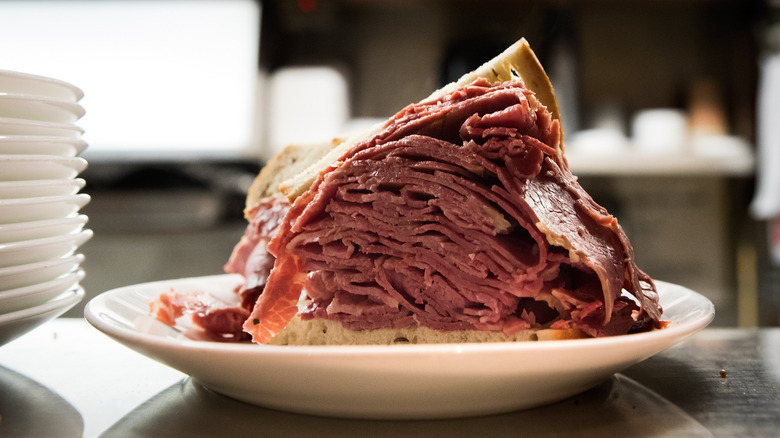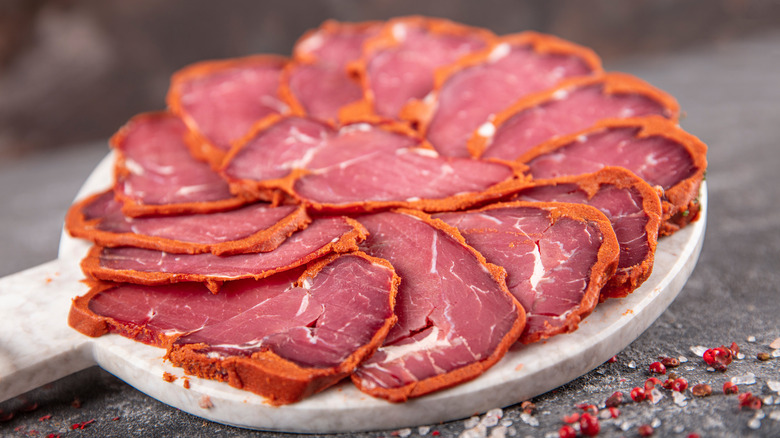The Biggest Difference Between American And European Pastrami
The delicatessen is a glorious institution — restaurant, grocer, butcher, and baker all rolled into one fantastic food emporium. The deli is, as it turns out, a uniquely American institution. The first American delis appeared in the 1880s, opened by German immigrants inspired by a type of business in their homeland known as a "delikatasse," derived from a Latin word meaning pleasing or delightful (via Nick's of Clinton). Unlike the delis we know in America, the delikatesse of Germany were butchers and cheesemongers that didn't serve any prepared food.
In the U.S., particularly in coastal cities, the term "delicatessen" inevitably invokes Jewish delis, defining cultural hubs of America, particularly in New York City. Serious Eats attributes the arrival of these delis in America to a wave of immigration that brought some 75,000 Romanian Jews to New York. These immigrants also introduced the country to pastrami, made from brined brisket coated with a spice rub and smoked. It's an American classic to this day, and yes, it truly is American because the pastrami we know has very little in common with the original European version.
European pastrami isn't always beef
Historians trace the origins of pastrami all the way back to the Ottoman Empire, according to National Geographic. The outlet recounts how 13th-century horsemen packed tough cuts of meat beneath their saddles, so as they rode the meat would be pressed between the rider's leg and the horse. This effectively tenderized it while imparting a salty flavor from the horse's sweat. The result was called "pastirma," derived from a Turkic word meaning "press."
However, it appears the Ottomans weren't too big on the use of horse sweat for seasoning because they soon adapted pastirma to the kitchen. According to Serious Eats, the original pastirma was made by salting and air-drying the meat before coating it in a spice rub made with fenugreek and cumin. In its final form, pastirma looks similar to Italian bresaola — bright red and usually served in thin slices. This preparation method is a stark contrast to the liquid brine used for American pastrami.
Per Taste, the change in procedure came about thanks to the advent of refrigeration making curing unnecessary. But the biggest difference between the New York deli staple and its European counterpart, is the meat itself. American pastrami is made from beef brisket, favored by Romanian immigrants for being cheap and plentiful. However, Serious Eats notes that in Europe, pastirma can be made from any cut of meat. Sheep, goats, ox, and geese are popular choices, so if you order pastrami in Europe, you'll need to be specific.

